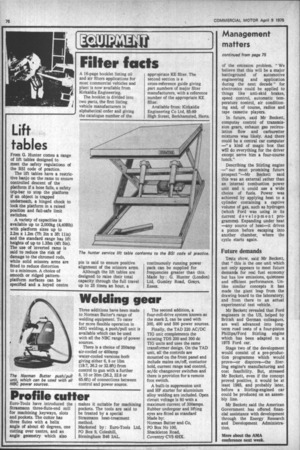Management matters
Page 78

If you've noticed an error in this article please click here to report it so we can fix it.
continued from page 75
of the emission problem. "We believe that this will be a major battleground of automotive engineering and application during the next decade" for electronics could be applied to things like anti-skid brakes, speed control, automatic temperature control, air conditioning and, of course, radios and tape cassette players.
In future, said Mr Beckett, computer control of transmission gears, exhaust gas recirculation flow and carburetter mixtures was likely. And there could be a central car computer — " a kind of magic box that will do everything for the driver except serve him a four-course lunch."
Describing the Stirling engine — " our most promising future prospect "—Mr Beckett said this was an external rather than an internal combustion power unit and it could use a wide choice of fuels. Power was achieved by applying heat to a cylinder containing a captive volume of gas, such as hydrogen (which Ford was using in its current development programme). Expanding under heat —any source of heat—it drives a piston before escaping into another chamber, where the cycle starts again.
Future demands
Tests show, said Mr Beckett, that "this is the one unit which not only appears to meet future demands for real fuel economy but has low emissions, quietness and efficient performance. Unlike similar concepts it has made the giant leap from the drawing board to the laboratory; and from there to an actual experimental test vehicle.
Mr Beckett revealed that Ford engineers in the US, helped by British and German colleagues, are well advanced into longterm road tests of a four-piston Phillips/Ford Stirling engine which has been adapted to a 1975 Ford car.
Stage two of the development would consist of a pre-production programme which would prove—or disprove—the Sterling engine's manufacturing and cost feasibility. But, stressed Mr Beckett, even if the concept proved positive, it would be at least 1985, and probably later, before a Stirling-engined car could be produced on an assembly line.
Mr Beckett said the American Government has offered financial assistance with development through the Energy Research and Development Administration.




























































































































